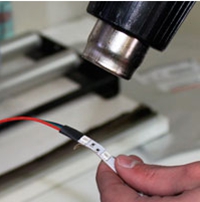How to solder the strips?
LED Tutorials - RGB wire Solder
RGB LED Strip Lights are such a versatile product due to the fact that they can easily be cut on the given cut lines and connected at any point between the copper dots on the LED Strip Lights, cut lengths vary between products. See the below tutorial for a complete guide on cutting 4 wire RGB LED Strip Lights and soldering wire directly to the LED Strip.
1.) Soldering Tools
Before attempting to solder wire to your LED Strip Lights it is important to be sure that you have the proper tools for your soldering project. We recommend using any 30W-60W soldering iron that is temperature adjustable and capable of soldering at around 500°-600°F. It is best to use a more powerful iron so that you don't need to spend a lot of time heating the joint, which can damage components. At the same time too hot of an iron can also damage the components. We also recommend using a thin rosin core solder and having a wet sponge or steal pad for cleaning the tip of your solder iron.
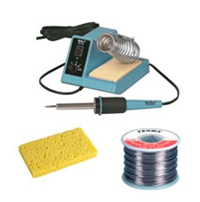
2.) Cleaning your Soldering Iron
It is important to have a clean tip on your soldering iron in order to keep your soldering joints from overlapping. Clean the tip of your solder iron regularly to keep your joints as clean and small as possible.
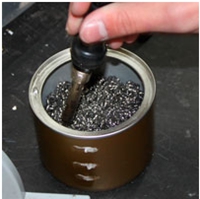
3.) Secure your RGB LED Strip Light
Use a few pieces of masking tape to secure your RGB LED Strip light so it does not move during your solder.
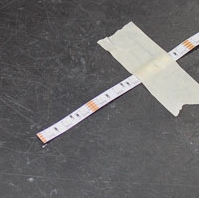
4.) Tin your 18-22AWG Stranded RGB Wire
Once your soldering iron is hot enough, tin your 18-22AWG stranded RGB wire by applying a small amount of solder directly to the stranded wire. Once you have completed this step your wire should be silver in color and no longer appear to be stranded.
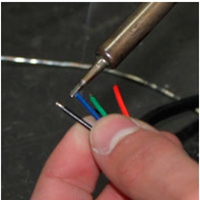
5.) Tin the copper dots on the RBG LED Strip
The next step is to tin the copper dots on your LED Strip Light by melting a small amount of solder directly to the copper dots. Be sure not to apply so much that the solder is overlapping, this will cause unwanted color changes on your RGB LED Strip Light.
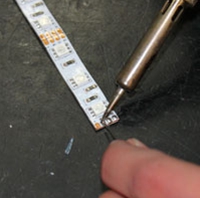
6.) Mate the wire to the Strip Light
Once you have tinned both the wire and the copper dots on your RGB LED Strip Light you can now mate the two together. Individually place the wire to the copper dots and then place the soldering iron over both in order to heat up each solder enough to melt and become one. Be sure to hold long enough to not create a "cold solder."
*COLD SOLDERS OCCUR WHEN ONLY ONE OF THE SOLDER JOINTS IS HEATED AND CONNECTED WHILE THE OTHER IS STILL COLD. COLD SOLDERS WILL NOT CARRY ELECTRICAL CURRENT.*
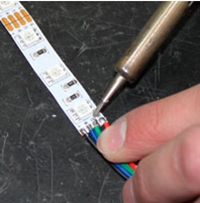
7.) View of Soldered wire to Strip Light
Once you have properly mated your wire to your LED Strip Light your final result should look something like this. Notice that the solder joints are clean and not overlapping one another.
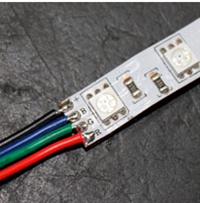
8.) Test your Solder
Once dry, connect your freshly soldered LED Strip to a proper power source and test your connection.
*FAILED CONNECTIONS WILL OCCUR FROM A COLD SOLDER JOINT. IF YOU NOTICE ANY SPARKING OR SMOKE YOU MORE THAN LIKELY HAVE A CROSSED OR ARCING CONNECTION.*
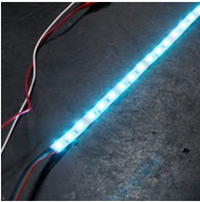
9.) Prepare for Heat Shrink
Peel back the 3M adhesive enough to cover up your solder joint with heat shrinking material. If you do not have heat shrink you can use a small amount of hot glue.
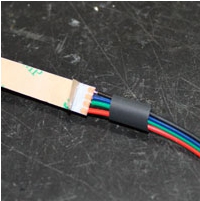
10.) Heat Shrink and Test Again
Use a heat gun to shrink your heat shrink to protect your solder joints and then test one more time to be certain of a proper connection.
